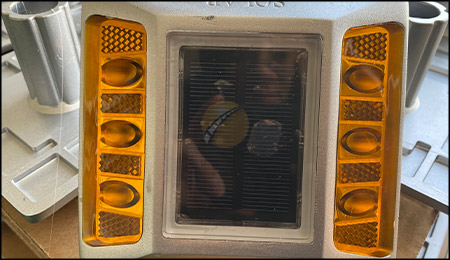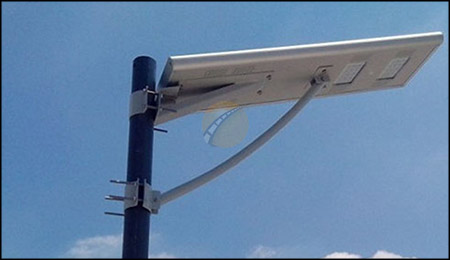Paving the Future: Solar Road Stud Lights and Their Role in Smart Cities
Jan 03, 2024
"Paving the Future" takes an immersive dive into the integration of solar road stud lights within the larger narrative of smart city development. The first section elucidates how these lights transcend their traditional role, evolving into integral components of smart city frameworks. By incorporating connectivity and smart technology, solar road stud lights become active contributors to intelligent traffic management systems, enhancing urban efficiency in multifaceted ways.
In the second section, the article unfolds specific instances of successful implementation in smart cities globally. Case studies highlight the adaptability of solar road studs in diverse urban settings, from optimizing traffic flow in bustling metropolises to enhancing pedestrian safety in busy intersections. The article also emphasizes the role of data collected by these lights, showcasing how it can be harnessed for informed city planning and resource allocation. Real-world examples underscore the practical benefits of integrating solar road stud lights into the broader fabric of smart cities.
 The third section delves into the collaborative potential of solar road stud lights with other smart city initiatives. Beyond their primary function in enhancing road safety, these lights contribute to the development of electric vehicle infrastructure and support sustainable urban mobility. By fostering connections between various elements of smart city ecosystems, solar road stud lights become pivotal in shaping holistic and interconnected urban landscapes. "Paving the Future" aims to inspire urban planners and policymakers to view solar road studs not merely as safety measures but as transformative elements in building smarter, more connected cities.
The third section delves into the collaborative potential of solar road stud lights with other smart city initiatives. Beyond their primary function in enhancing road safety, these lights contribute to the development of electric vehicle infrastructure and support sustainable urban mobility. By fostering connections between various elements of smart city ecosystems, solar road stud lights become pivotal in shaping holistic and interconnected urban landscapes. "Paving the Future" aims to inspire urban planners and policymakers to view solar road studs not merely as safety measures but as transformative elements in building smarter, more connected cities.
.jpg) In the fourth section, the article addresses the challenges and potential solutions associated with scaling up the implementation of solar-powered road studs in smart cities. It delves into issues such as infrastructural compatibility, interoperability, and the need for standardized frameworks. By presenting strategies for overcoming these challenges, the article equips city planners and policymakers with actionable insights to facilitate a seamless integration process. It also discusses collaborative efforts between public and private sectors, emphasizing the importance of partnerships in achieving widespread adoption.
In the fourth section, the article addresses the challenges and potential solutions associated with scaling up the implementation of solar-powered road studs in smart cities. It delves into issues such as infrastructural compatibility, interoperability, and the need for standardized frameworks. By presenting strategies for overcoming these challenges, the article equips city planners and policymakers with actionable insights to facilitate a seamless integration process. It also discusses collaborative efforts between public and private sectors, emphasizing the importance of partnerships in achieving widespread adoption.
.jpg) The fifth section explores the societal impacts of solar LED road stud lights within smart cities. It considers the influence of these lights on community well-being, perception of safety, and overall quality of life. By analyzing public feedback and community engagement initiatives, the article sheds light on the social dynamics influenced by the presence of solar road stud lights. This section underscores the importance of considering the human aspect in the deployment of smart technologies, emphasizing that the success of these innovations goes beyond technical functionality to enhancing the lives of city residents.
The fifth section explores the societal impacts of solar LED road stud lights within smart cities. It considers the influence of these lights on community well-being, perception of safety, and overall quality of life. By analyzing public feedback and community engagement initiatives, the article sheds light on the social dynamics influenced by the presence of solar road stud lights. This section underscores the importance of considering the human aspect in the deployment of smart technologies, emphasizing that the success of these innovations goes beyond technical functionality to enhancing the lives of city residents.
The article concludes by envisioning a future where solar road stud lights play a central role in shaping sustainable, intelligent cities, emphasizing the transformative impact these devices can have on urban landscapes.

.jpg)
.jpg)
The article concludes by envisioning a future where solar road stud lights play a central role in shaping sustainable, intelligent cities, emphasizing the transformative impact these devices can have on urban landscapes.




